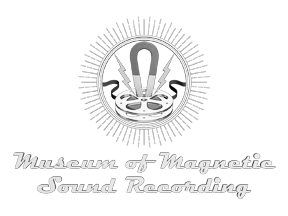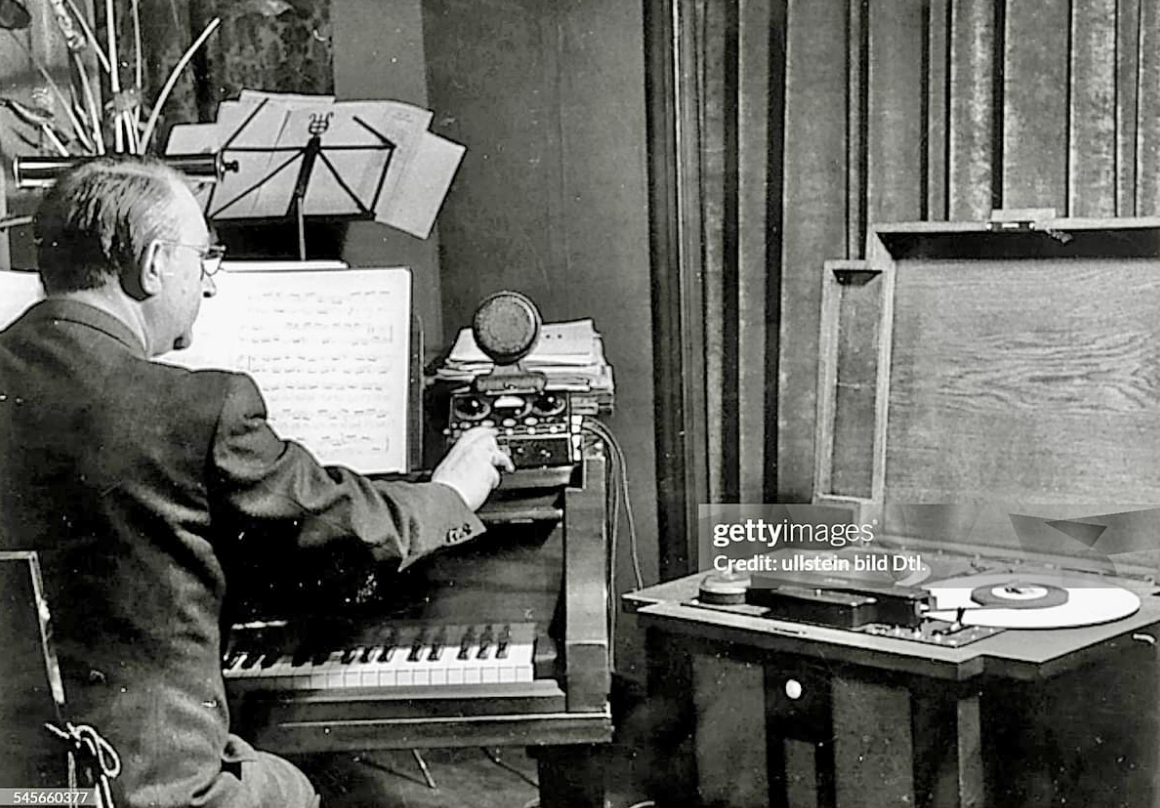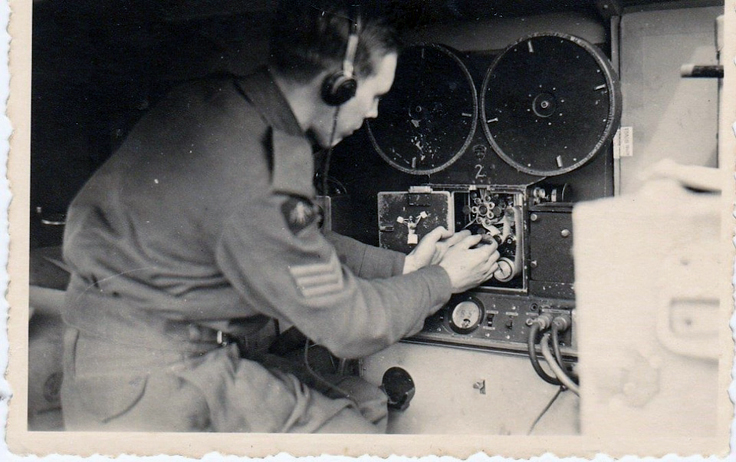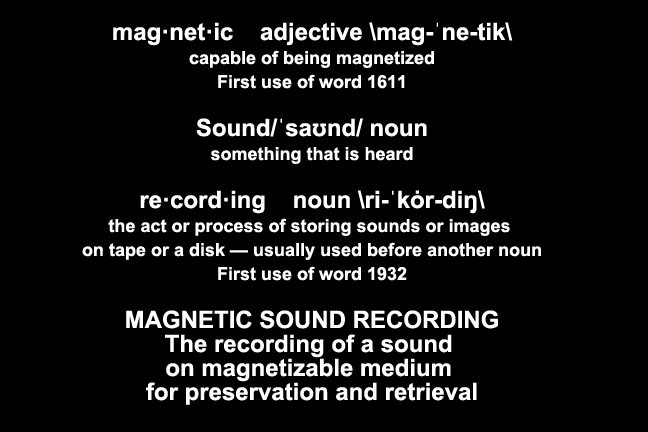
Here are a few of the persons (with the year the photo was taken) who made magnetic sound recording possible.
Oberlin Smith 1888
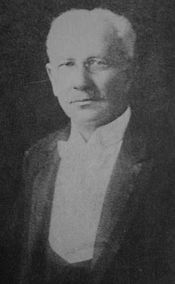
Magnetic recording was conceived of as early as 1877 by the American engineer Oberlin Smith and demonstrated in 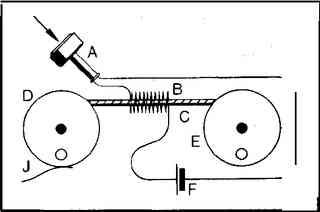 practice in 1898 by Danish engineer Valdemar Poulsen. Analog magnetic wire recording, and its successor, magnetic tape recording, involve the use of a magnetizable medium which moves with a constant speed past a recording head. An electrical signal, which is analogous to the sound that is to be recorded, is fed to the recording head, inducing a pattern of magnetization similar to the signal. A playback head can then pick up the changes in magnetic field from the tape and convert it into an electrical signal.
practice in 1898 by Danish engineer Valdemar Poulsen. Analog magnetic wire recording, and its successor, magnetic tape recording, involve the use of a magnetizable medium which moves with a constant speed past a recording head. An electrical signal, which is analogous to the sound that is to be recorded, is fed to the recording head, inducing a pattern of magnetization similar to the signal. A playback head can then pick up the changes in magnetic field from the tape and convert it into an electrical signal.
On September 8, 1888, Smith published a short note entitled "Some Possible Forms of the Phonograph" in the British journal Electrical World, where he suggested (probably for the first time) the use of permanent magnetic impressions for the recording of sound. Smith suggested using cotton or silk thread, into which steel dust or short clippings of fine wire could be suspended. These particles were to be magnetized in accordance with the alternating current from a microphone source. Smith also discussed the possibility of using a hard metal wire or chain, but preferred the thread.
Smith built a machine to spin steel dust into thread, but could not harden the dust because of oxidation. As implementing his ideas would require thousands of hours of work, he published his theories but no one attempted to implement them. Many of Smith's ideas were independently reproduced by Valdemar Poulsen when he developed the first true magnetic recorder
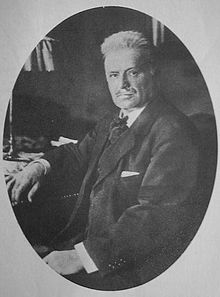
Valdemar Poulsen 1898 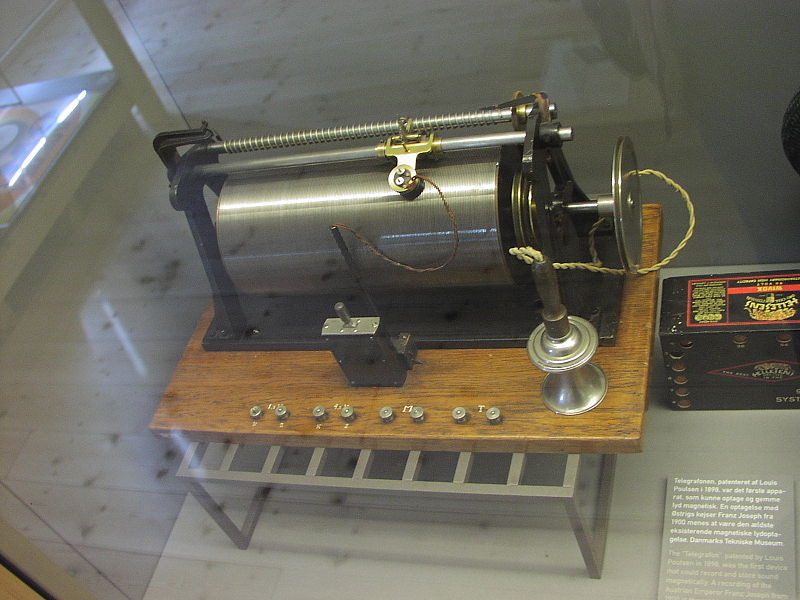
(23 November 1869 – 23 July 1942) A Danish engineer who made significant contributions to early radio technology. He developed a magnetic wire recorder called the telegraphone in 1899 and the first continuous wave radio transmitter, the Poulsen arc transmitter, in 1903, which was used in some of the first broadcasting stations until the early 1920s.
The magnetic recording was demonstrated in principle as early as 1898 by Valdemar Poulsen in his telegraphone. Magnetic wire recording, and its successor, magnetic tape recording, involve the use of a magnetizable medium which moves past a recording head. An electrical signal, which is analogous to the sound that is to be recorded, is fed to the recording head, inducing a pattern of magnetization similar to the signal. A playback head (which may be the same as the recording head) can then pick up the changes in the magnetic field from the tape and convert them into an electrical signal.
Poulsen obtained a Telegraphone Patent in 1898, and with his assistant, Peder O. Pedersen, later developed other magnetic recorders that recorded on steel wire, tape, or disks. None of these devices had electronic amplification, but the recorded signal was easily strong enough to be heard through a headset or even transmitted on telephone wires. At the 1900 World's Fair in Paris, Poulsen had the chance to record the voice of Emperor Franz Josef of Austria which is believed to be the oldest surviving magnetic audio recording today.
Poulsen developed an arc converter in 1908, referred to as the "Poulsen Arc Transmitter", which was widely used in radio before the advent of vacuum tube technology. The system was able to communicate between Lyngby and Newcastle with a 100-foot mast.
He died on 23 July 1942.
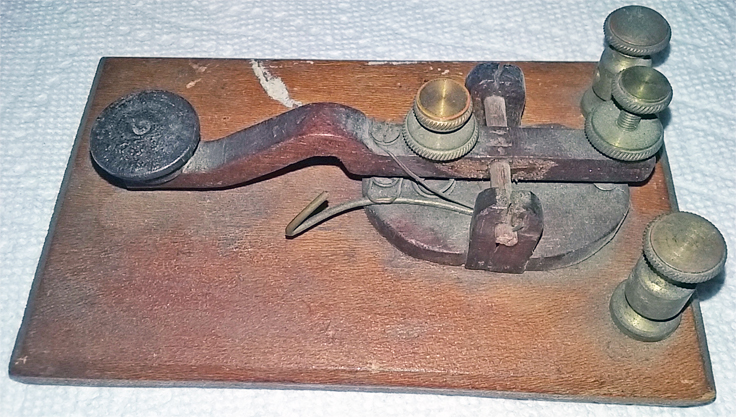
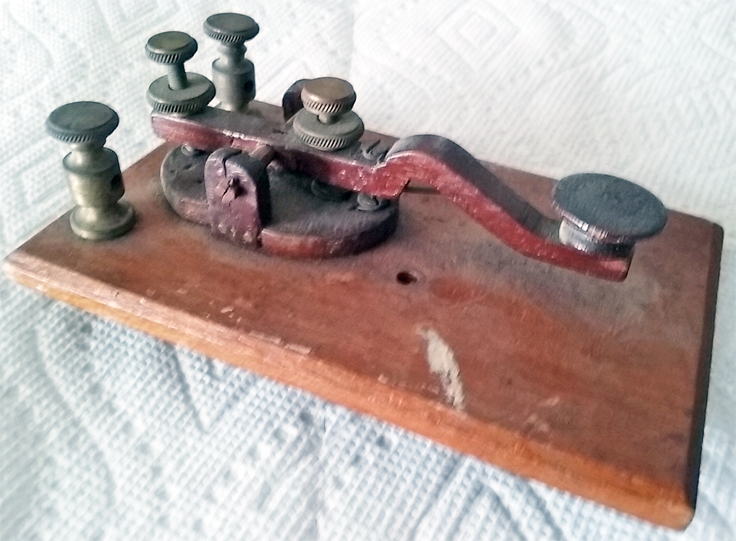
Valdamar Poulsen Morse code key photos donated by Paul Rich
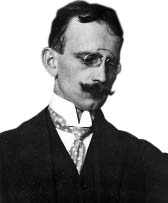
Fritz Pfleumer 1881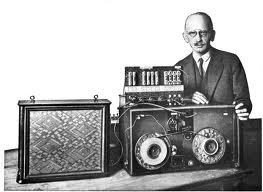
Magnetic tape recording as we know it today was developed in Germany during the 1930s at BASF (then part of the chemical giant IG Farben) and AEG in cooperation with the RRG. This was based on Fritz Pfleumer's 1928 invention of paper tape with oxide powder lacquered to it.
Magnetophon was the brand or model name of the pioneering reel-to-reel tape recorder developed by engineers of the German electronics company AEG in the 1930s, based on the magnetic tape invention by Fritz Pfleumer. AEG created the world's first practical tape recorder, the K1, first demonstrated in Germany in 1935 at the Berlin Radio Show.
Fritz was born as the son of Robert and Minna, née Hünich. His father Robert (1848–1934) was born in Greiz, and his mother Minna (1846–1932) was born in Freiberg. Fritz had five siblings – Mimi, Hans, Hermann, Otto, and Mizi. Hans emigrated to the USA.[2]
Pfleumer developed a process for putting metal stripes on cigarette papers and reasoned that he could similarly coat a magnetic stripe to be used as an alternative to wire recording.
In 1927, after experimenting with various materials, Pfleumer used very thin paper that he coated with iron oxide powder using lacquer as glue. He received a patent in 1928.
On 1 December 1932 Pfleumer granted AEG the right to use his invention when building the world's first practical tape recorder, called Magnetophon K1. It was first demonstrated at the IFA in 1935.
Eduard Schüllerat 1933
AEG created the world's first practical tape recorder, the K1
Magnetophon was the brand or model name of the pioneering reel-to-reel tape recorder developed by engineers of the German electronics company AEG in the 1930s, based on the magnetic tape invention by Fritz Pfleumer. AEG created the world's first practical tape recorder, the K1, first demonstrated in Germany in 1935 at the Berlin Radio Show.
Many of the photos below are by David Winter of his FT4 Magnetophon. We appreciate his giving permission to display these photos on the MOMSR website. • David Winter - Magnetophon videos 1 2 3
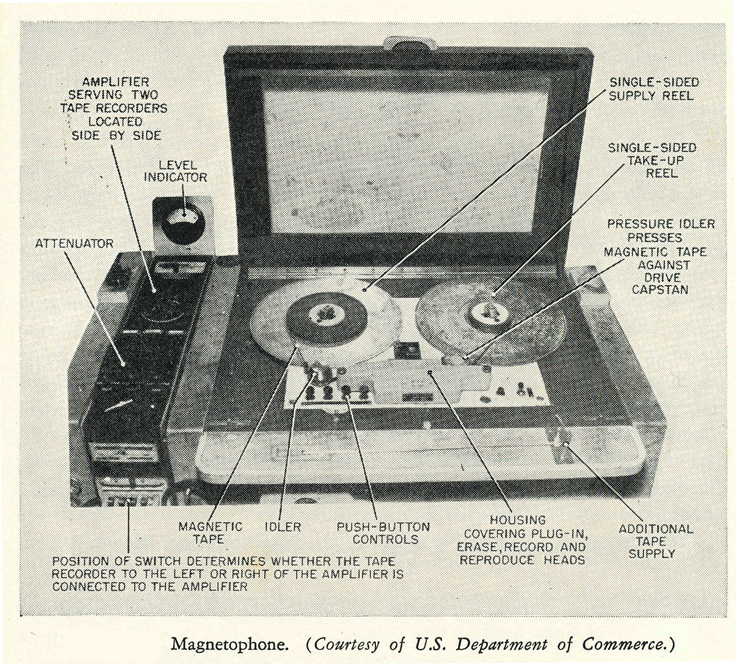
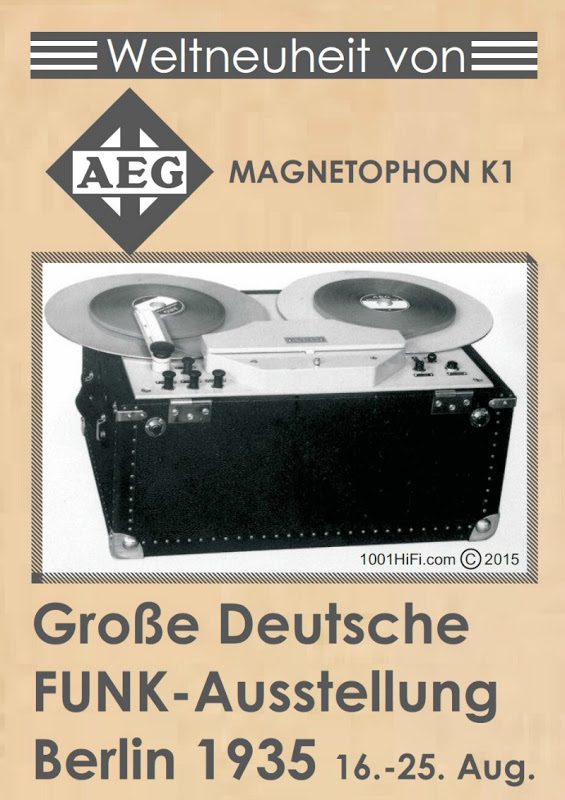
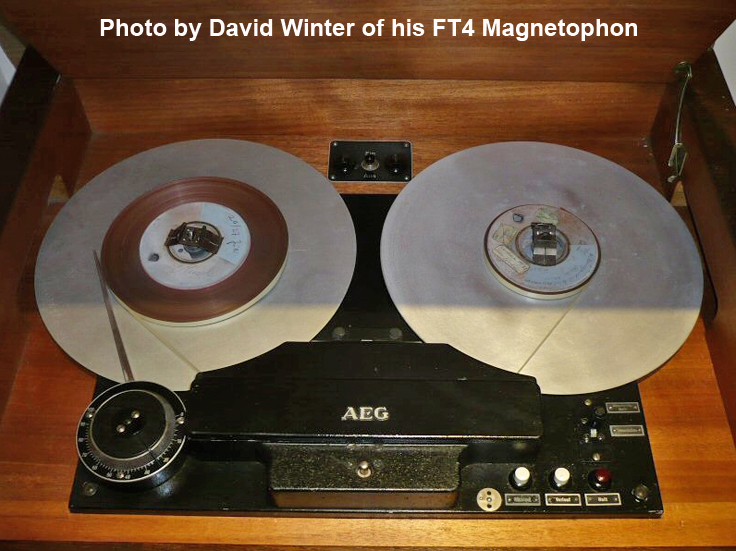
1935: Presentation of the world's first tape device Magnetophon K1 based on work by Eduard Schüllerat the Berlin International Radio Exhibition
Magnetophon was the brand or model name of the pioneering reel-to-reel tape recorder developed by engineers of the German electronics company AEG in the 1930s, based on the magnetic tape invention by Fritz Pfleumer. AEG created the world's first practical tape recorder, the K1, first demonstrated in Germany in 1935 at the Berlin Radio Show.
The Magnetophon tape recorder was one of the first recording machines to use magnetic tape in preserving voice and music. However, early Magnetophons gave disappointing results.
One of the first concerts to be recorded on a Magnetophon was Mozart's 39th Symphony played by the London Philharmonic Orchestra, conducted by Sir Thomas Beecham, during their 1936 concert tour. The recording was made on an AEG K2 Magnetophon running at 100 cm/s. The tape used was the early black iron oxide Fe3O4 type. When Beecham 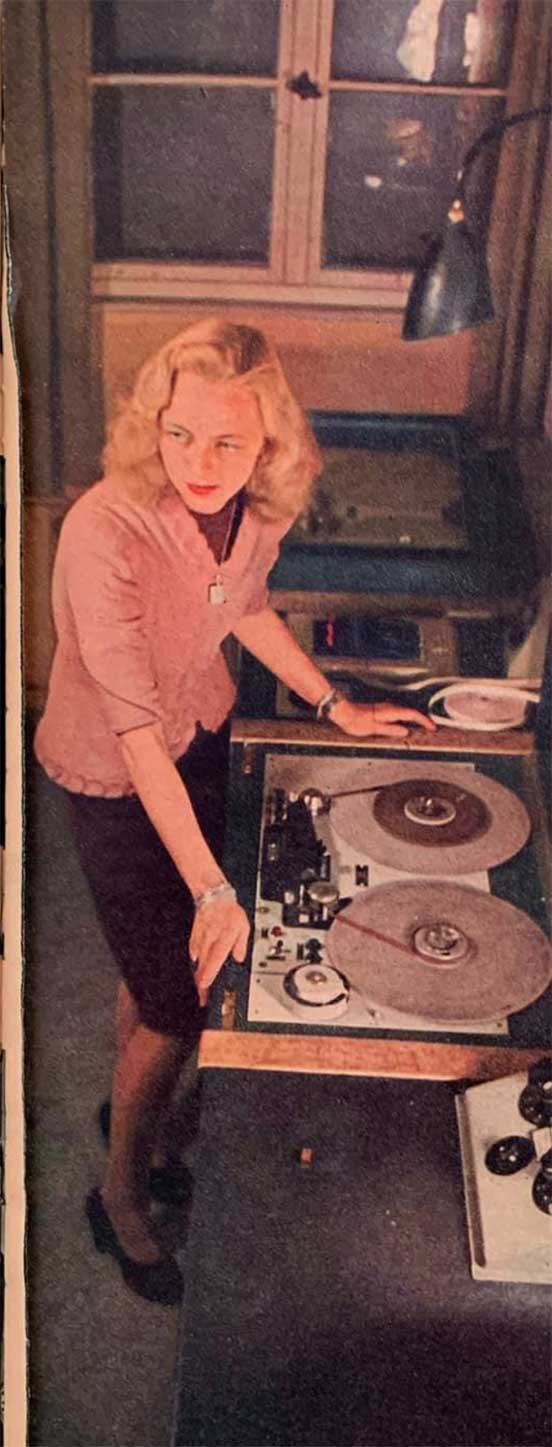 and the musicians heard the playback they were greatly disappointed with the distortion and noise on the recording. This recording survived until the 1990s and has been transferred. The tape is now "lost". Some other surviving tapes show a tendency toward over modulation.
and the musicians heard the playback they were greatly disappointed with the distortion and noise on the recording. This recording survived until the 1990s and has been transferred. The tape is now "lost". Some other surviving tapes show a tendency toward over modulation.
Later in 1939, the Fe3O4 oxide was replaced by the Fe2O3 type, which gave a significantly better recording quality, so much that the formula became a worldwide standard until the 1970s when chromium dioxide tapes appeared.
Adding a DC bias to the record head gave some improvement, and in 1941, Hans Joachim von Braunmühl and Dr. Walter Weber, both engineers at the German national broadcasting organization RRG (Reichs-Rundfunk-Gesellschaft), accidentally discovered the technique of AC tape bias in which the addition of an inaudible high-frequency tone resulted in a striking improvement in sound quality. The discovery was made when a Magnetophone producing recordings of extraordinary quality was sent 'for repair'. The machine proved to have an oscillating DC bias amplifier. Magnetic media is inherently non-linear, but AC bias was a technique whereby the tape's magnetisation was left in a state proportional to the instantaneous audio electrical signal. The Magnetophon became a high fidelity recording system that outperformed gramophone recording (which was the 78 rpm system at this time). (tonbandmuseum)
German musician, composer Eduard Künneke, making a magnetic recording on the German Magnetophon in 1940.
Eduard Künneke was a German composer notable for his operettas, operas, theatre music and some orchestral works. Kuenneke was born in Emmerich, Lower Rhine. After obtaining his school diploma he moved in 1903 to Berlin where he studied musicology and the history of literature; he translated Beowulf into German.
Marvin Camras (1916–1995)
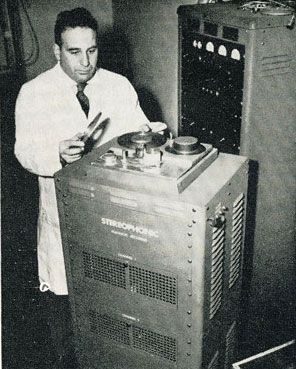 An electrical engineer and inventor who was widely influential in the field of magnetic recording. Camras built his first recording device, a wire recorder, in the 1930s for a cousin who was an aspiring singer. Shortly afterwards he discovered that using magnetic tape made the process of splicing and storing recordings easier. Camras's work attracted the notice of his professors at what is now Illinois Institute of Technology (IIT) and was offered a position at Armour Research Foundation (which merged with Lewis Institute in 1940 to become IIT) to develop his work.
An electrical engineer and inventor who was widely influential in the field of magnetic recording. Camras built his first recording device, a wire recorder, in the 1930s for a cousin who was an aspiring singer. Shortly afterwards he discovered that using magnetic tape made the process of splicing and storing recordings easier. Camras's work attracted the notice of his professors at what is now Illinois Institute of Technology (IIT) and was offered a position at Armour Research Foundation (which merged with Lewis Institute in 1940 to become IIT) to develop his work.
In 1933 this all changed. German engineers with AEG created a magnetic reel to reel tape recorder based on the magnetic tape invention of Fritz Pfleumer in 1927. It was this magnetic tape that changed everything. After WW II the technology began expanding all over the world. The key components were: tape could be edited without a trace of a splice; tape could be copied with little loss of quality: and tape could be erased and reused over and over.
Here's an interesting article about capturing sound during WW II. Doug Swartout - UK WW II Cine Sound Recording referral to The Telegraph UK
John T. "Jack" Mullen US 1948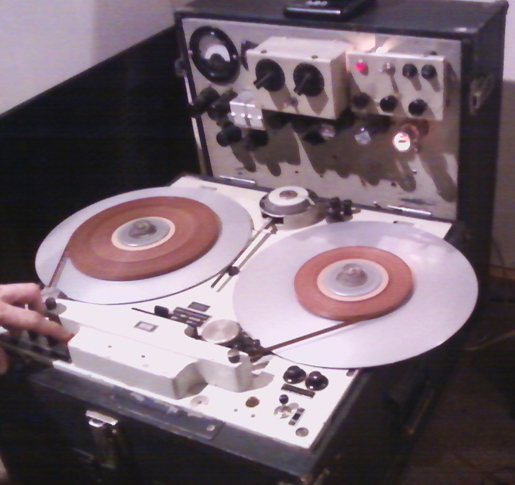
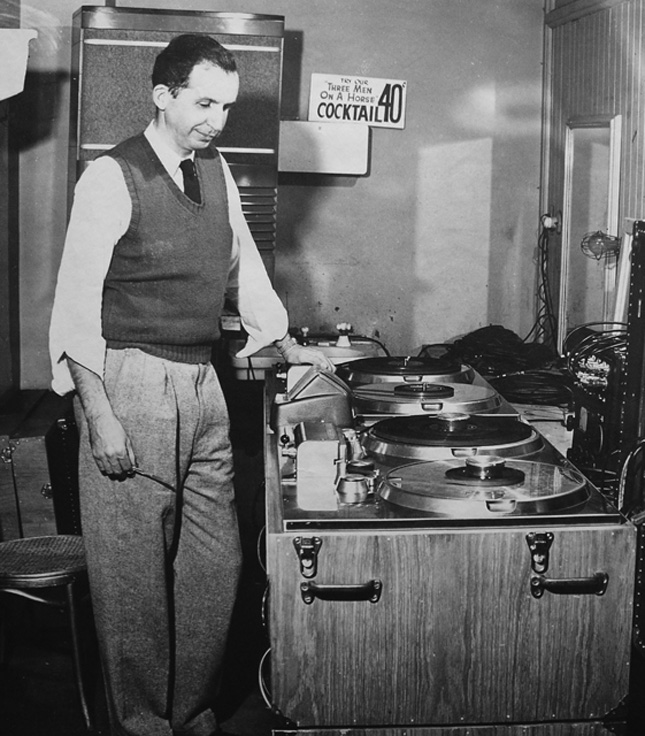
German Magnetophon brought to US by John Mullen(rt)
(October 5, 1913 – June 24, 1999) was an American pioneer in the field of magnetic tape sound recording and made significant contributions to many other related fields. From his days at Santa Clara University to his death, he displayed a deep appreciation for classical music and an aptitude for electronics and engineering. When he died in 1999, he was buried with a rosary and a reel of magnetic tape. A 2006 documentary movie, Sound Man: WWII to MP3, was made about his life and contributions to sound recording.
After WW II , John "Jack" T. Mullin, who was in the US Army Signal Corp, brought back to the US, 2 German Magnetaphon reel to reel magnetic tape recorders. Mullin took the 2 Magnetophons apart and shipped them back to the US.
Following a number of demonstrations, Mullin attracted Bing Crosby's production folks. Crosby had been frustrated by the poor end quality of disc editing for his radio program. After Mullin demonstrated the ability to not only capture a great recording, but also to be able to edit the content with no loss of quality, the Crosby folks decided to adopt the technology. Mullin eventually went to work for Crosby as his Chief Engineer, using the 2 Magnetophons and the 50 reels of German tape. He edited the Crosby shows splicing the various tape pieces together as Crosby and his producers directed. Crosby expressed concern regarding there being only 2 recorders and a limited supply of tape. This eventually led to Crosby's backing of the Ampex company. Their first product was the Ampex 200A.
Alexander M. Poniatoff - Ampex
Ampex was named after the company's owner, A. M. Poniatoff , using his initials plus EX for excellence. Alexander Mathew Poniatoff was born in the Kazan District of Russia,about 400 miles east of Moscow, on March 25, 1892. His middle name is the first Christian name of his father, such designations being a Russian family tradition. Mathew Poniatoff was a successful businessman with a couple of dozen employees engaged in cutting timberland and producing firewood and parts for carriages and sleighs.
During WW II, Ampex was building radar motors and generators for Dalmo to supply the US Navy. Given the lessening demand for the motors, 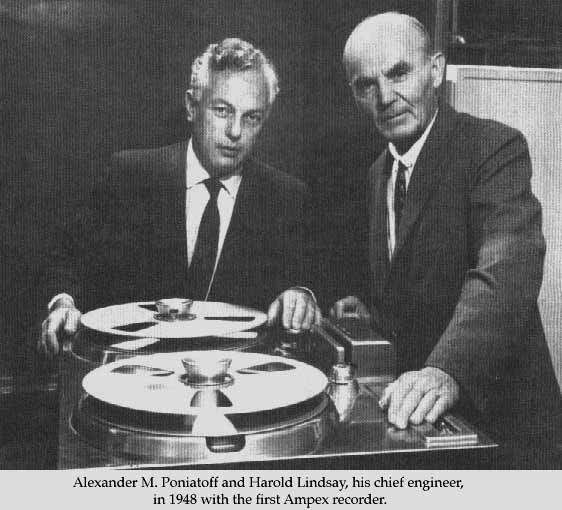 Ampex was looking for another product to produce. Lindsay connected Alexander M. Poniatoff with Jack Mullin and Pontiatoff agreed that magnetic tape recorders was the way to go. He asked Lindsay to join Ampex and work with Myron Stolaroff to develop an Ampex tape recorder.
Ampex was looking for another product to produce. Lindsay connected Alexander M. Poniatoff with Jack Mullin and Pontiatoff agreed that magnetic tape recorders was the way to go. He asked Lindsay to join Ampex and work with Myron Stolaroff to develop an Ampex tape recorder.
At Jack Mullins suggestion, they began by developing a playback head. It proved to be superior to the one Mullin had on the original Magnetophons. Mullin had by this time agreed to record and edit for Bing Crosby and Bing Crosby Enterprises. As Mullin had committed to help Col. Richard Ranger with a recorder for Crosby, he could not share the electronics information with Ampex. However when Ranger's work failed to meet Crosby's expectations, Mullin encouraged Ampex to make a presentation.
Several interesting things occurred. As there was limited tape available from Mullin, Ampex was in a bind to have tape for testing. Luckily within a few weeks of each other, two tape manufacturers (Audio Devices and 3M) approached Ampex asking them to test their tape development. That solved the tape problem and the tape quality improved as did the development of the first Ampex recorder
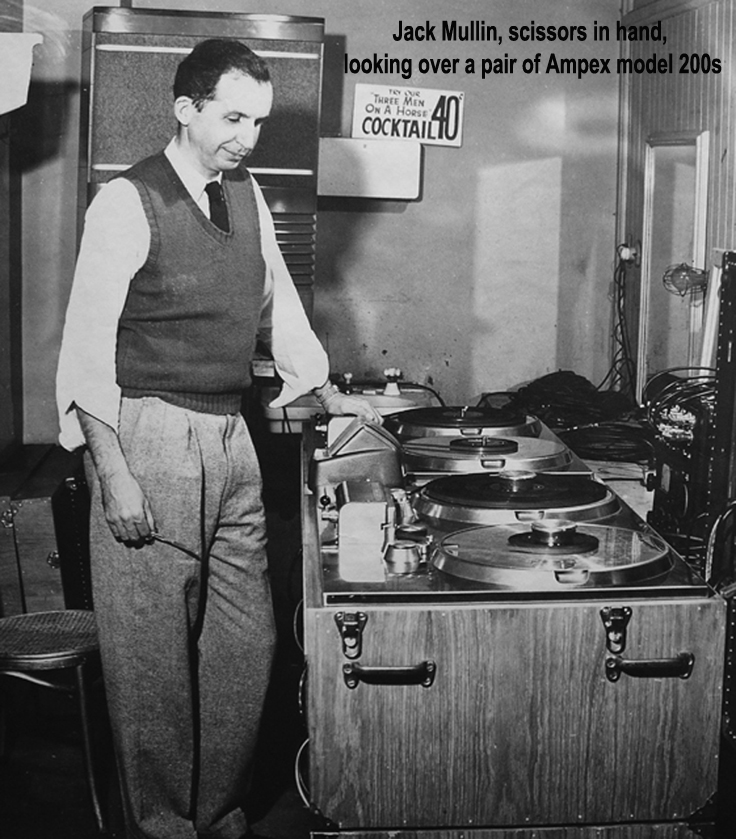 By the end of August 1947, the Ampex 200-A development was progressing well and the Crosby demonstration was
By the end of August 1947, the Ampex 200-A development was progressing well and the Crosby demonstration was 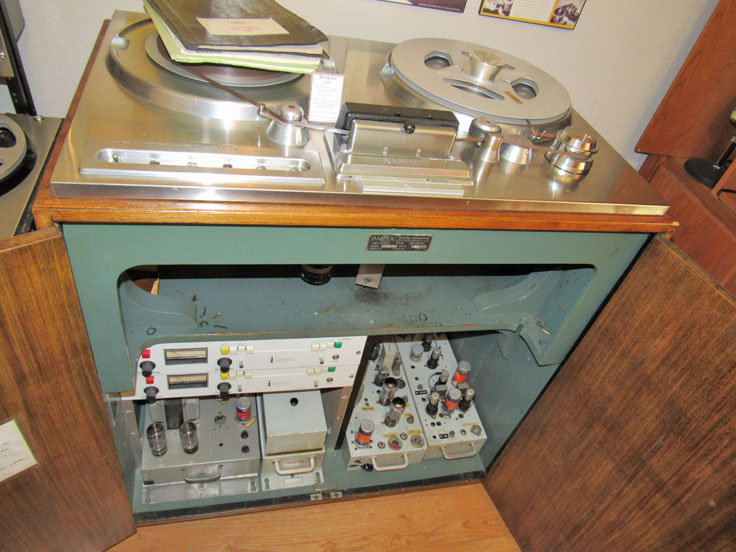 scheduled. Just before the Crosby presentation, the Ampex 200-A record electronics developed a bug. The prototype was demonstrated anyway with playback only using Jack Mullin's tapes. It was lucky that in their development, Ampex had decided to match Mullin's Magnetophon tape speed (which = 30 ips), or the playback would not have been possible. In spite of there being a wide range of engineers who witnessed the demonstration, no one asked to see how the unit recorded.
scheduled. Just before the Crosby presentation, the Ampex 200-A record electronics developed a bug. The prototype was demonstrated anyway with playback only using Jack Mullin's tapes. It was lucky that in their development, Ampex had decided to match Mullin's Magnetophon tape speed (which = 30 ips), or the playback would not have been possible. In spite of there being a wide range of engineers who witnessed the demonstration, no one asked to see how the unit recorded.
A few days after the demonstration, folks from Crosby Enterprises approached Ampex with a request to distribute the recorder in eleven western states. An agreement was reached, contracts signed and immediately Crosby's reps gave Ampex an order for twenty Ampex 200-A's. They were all for ABC in New York, Chicago and Hollywood.
MOMSR's Ampex 200A (right) is number 33 (of 214 built) and was originally sold to Capitol Records.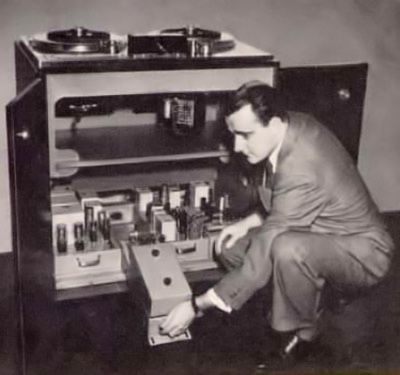
As Ampex geared up to meet the demand they realized they had no funds and banks were not willing to loan to them given the new technology. However Lindsay states in his db article, an envelope arrived with a Hollywood postmark and inside was a check for $50,000 from Bing Crosby with no strings attached. Pretty amazing!
Ampex was named after the company's owner, A. M. Poniatoff , using his initials plus EX for excellence. Alexander Mathew Poniatoff was born in the Kazan District of Russia,about 400 miles east of Moscow, on March 25, 1892. His middle name is the first Christian name of his father, such designations being a Russian family tradition. Mathew Poniatoff was a successful businessman with a couple of dozen employees engaged in cutting timberland and producing firewood and parts for carriages and sleighs.
Richard H. Ranger - Rangertone, Inc.
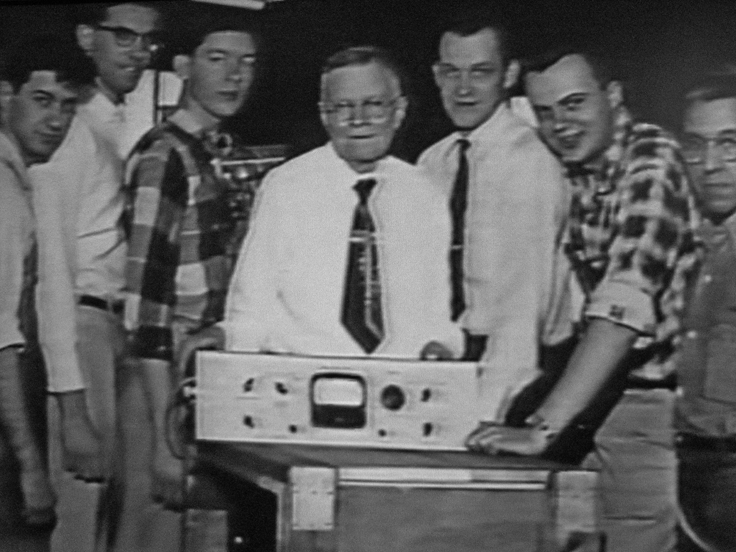 (13 June 1889 – 10 January 1962) was an American electrical engineer, music engineer and inventor. He served in the U.S. Army Signal Corps during World War I, earning the rank of Major. After the war, he attended the Massachusetts Institute of Technology (MIT) from 1919 to 1923.
(13 June 1889 – 10 January 1962) was an American electrical engineer, music engineer and inventor. He served in the U.S. Army Signal Corps during World War I, earning the rank of Major. After the war, he attended the Massachusetts Institute of Technology (MIT) from 1919 to 1923.
As a designer for the Radio Corporation of America (RCA), in 1924, Richard Ranger invented the wireless photoradiogram, or transoceanic radio facsimile, the forerunner of today’s fax machines. A photograph of President Calvin Coolidge sent from New York to London in November 1924 became the first photo picture reproduced by transoceanic radio facsimile. Commercial use of Ranger’s product began two years later.
In 1930, he formed a company, Rangertone, Inc., in Newark, New Jersey. The company, which marketed the electronic 'Rangertone Organ', was sold after his death, and remains privately owned as Rangertone Research, Inc.
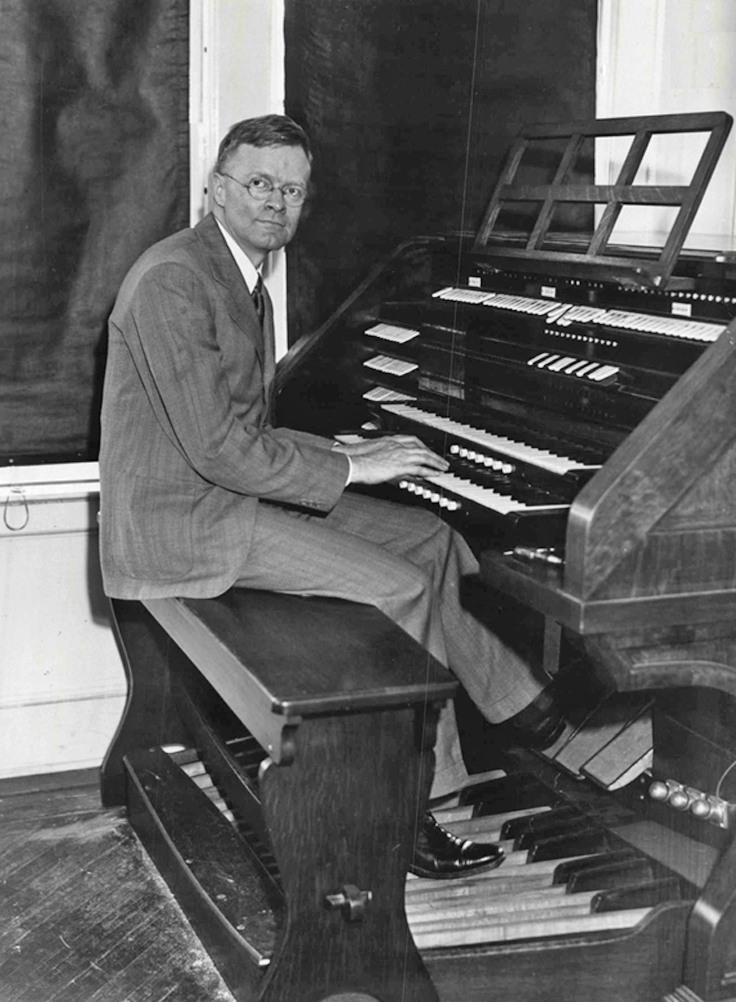 In 1932, he invented the NBC chime machine (rt), an automatic device to reproduce the familiar hand-struck NBC chimes used by the National
In 1932, he invented the NBC chime machine (rt), an automatic device to reproduce the familiar hand-struck NBC chimes used by the National 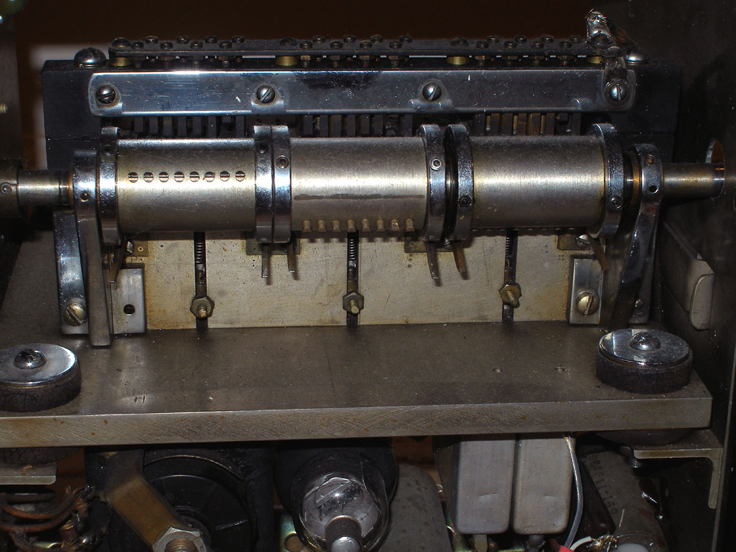 Broadcasting Company (NBC) radio network. By connecting hiselectrically operated chimes with outdoor loudspeakers, he was later able to create the effect of church bells. He also did other work relating to electronic organs.
Broadcasting Company (NBC) radio network. By connecting hiselectrically operated chimes with outdoor loudspeakers, he was later able to create the effect of church bells. He also did other work relating to electronic organs.
During World War II, he returned to the U.S. Army Signal Corps as a Colonel and was put in charge of radar and communications at the Radio and Radar Test Labs in Orlando, Florida. He later went to Europe as part of Field information Agency, Technical, an investigative team between 1944 and 1946 to examine German advances in electronics and wrote a series of technical reports on electrical components, communications, television, and (most significantly) magnetic tape recording.
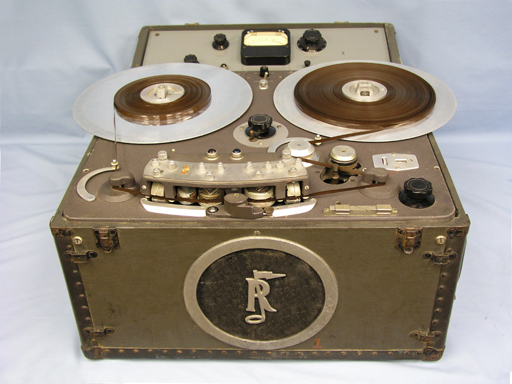 After the war, Ranger's work led to further development of magnetic tape recorders. He developed a product
After the war, Ranger's work led to further development of magnetic tape recorders. He developed a product 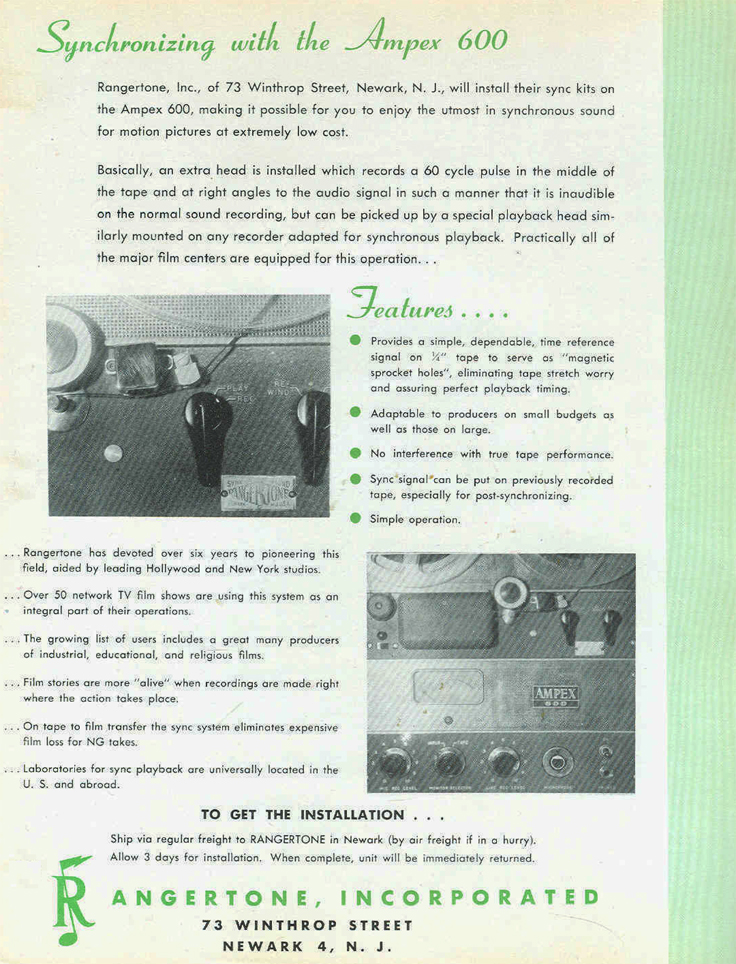 using the German technology, and demonstrated it to potential users, including the members of the Institute of Radio Engineers, the National Broadcasting Company, the Radio Corporation of America, the American Institute of Electrical Engineers, and individuals like singer Bing Crosby.
using the German technology, and demonstrated it to potential users, including the members of the Institute of Radio Engineers, the National Broadcasting Company, the Radio Corporation of America, the American Institute of Electrical Engineers, and individuals like singer Bing Crosby.
His subsequent refinements led to improved synchronization of sound and visual portions of films. The Academy of Motion Picture Arts and Sciences presented Ranger with an Oscar in 1956 for his development of the tape recorder and synchronization of film and sound.
Richard H. Ranger was inducted into the New Jersey Inventors Hall of Fame in 1997.
Les Paul - Multi-tracking
It was the Baby Boomers who first realized the benefits of the magnetic tape technology. While recording studios had professional 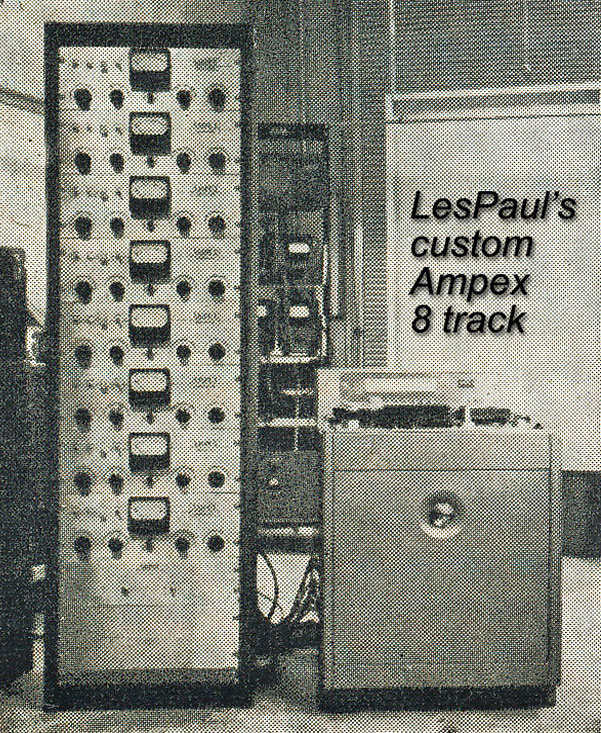 recorders, smaller and very portable reel tape recorders were available beginning in the early 1950's and evolved into the 1960's and 1970's. Before the Sony Walkman, there were many 3 inch, 5 inch and 7 inch tape recorders, which allowed you to record and playback sound anywhere.
recorders, smaller and very portable reel tape recorders were available beginning in the early 1950's and evolved into the 1960's and 1970's. Before the Sony Walkman, there were many 3 inch, 5 inch and 7 inch tape recorders, which allowed you to record and playback sound anywhere.
Next came multi-tracking first developed by Les Paul. This evolved into 4, 8, 16, 24 & 48+ track recorders. This was a very exciting era for sound recording. Recording engineers were experimenting with all types of special effects. Tape recorder manufacturers were incorporating the innovations into new products with hundreds of models being released every year. In 1962 the 1/4 inch tape had been reduced to 1/8 inch by Philips and loaded into the compact cassette format.
Today sound recording is pretty much taken for granted
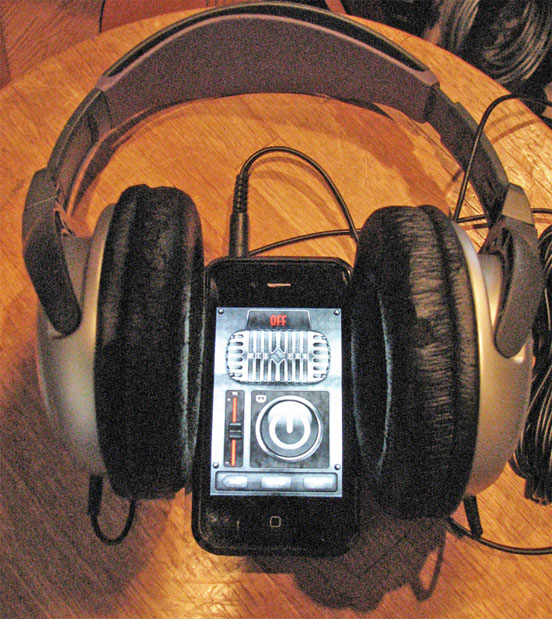 A smart phone can capture very high quality sound. Touch a screen and instantly sound is recorded...video too!
A smart phone can capture very high quality sound. Touch a screen and instantly sound is recorded...video too! 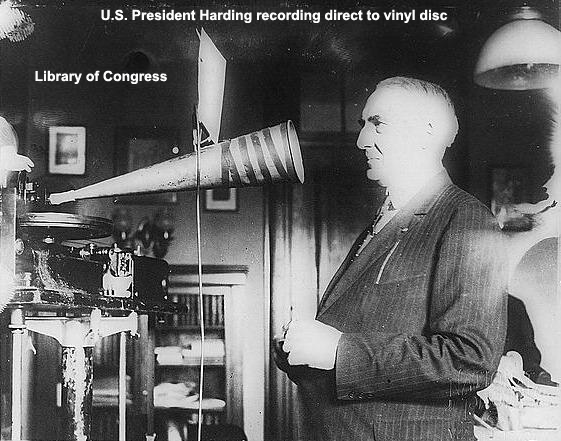 It's interesting that the phone became such a good sound recorder, because in the late 1890's it was Valdemar Poulsen, a Danish engineer who developed a magnetic wire recorder in 1899. Why? To be a device to take messages from the telephone. Telephone answering devices and dictating recorders drove the early wire recorders, as well as Edison's cylinder recorders & players.
It's interesting that the phone became such a good sound recorder, because in the late 1890's it was Valdemar Poulsen, a Danish engineer who developed a magnetic wire recorder in 1899. Why? To be a device to take messages from the telephone. Telephone answering devices and dictating recorders drove the early wire recorders, as well as Edison's cylinder recorders & players.
These devices captured sound using vibrations and were available to the public who mostly used them to play back music. Prior to WW II, the wire recorder and the vinyl records were all folks had, although there were innovations in optical and movie sound recording. These devices were definitely not readily portable.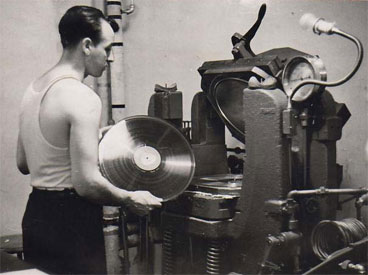 In the 1930's & 1940's the technology of recording direct to a vinyl record had produced some very high quality sound recordings. The down side was that the only method available to edit out a mistake, was to either start over, or copy a selection to another vinyl record resulting in a loss of quality.
In the 1930's & 1940's the technology of recording direct to a vinyl record had produced some very high quality sound recordings. The down side was that the only method available to edit out a mistake, was to either start over, or copy a selection to another vinyl record resulting in a loss of quality.
Digital Technology
The magnetic sound recording technology began and enabled the digital technology. In 1967 the first digital audio magnetic tape recorder was developed and by 1982 the first compact discs (CDs) are marketed by Philips and Sony. The reel to reel analog open reel tape recorder quickly passed into history with only a few professional models continuing to be produced.
So there was this wonderfully magical period of discovery and innovation of magnetic sound recording that basically went from the early 1930's to the early 1980's. This is what the Museum of Magnetic Sound Recording is ABOUT! The Museum will preserve these unique magnetic recording devices by: researching and documenting their history; maintaining and restoring the devices; and displaying the recorder for demonstration to the general public.
While based initially on the reel to reel, or open reel analogue tape recorder collection loaned to the Museum by Phantom Productions, Inc., the museum will also be representing other areas of sound recording techniques throughout history.
More Resources
History of Recording up to 1958
Birth of the German Magnetophon Tape Recorder 1928 to 1945 • Magnetism • David Winter - Magnetophon videos 1 2 3
See also multi-track recording
It is the mission of this museum to preserve and document the recording devices that were enabled by the above technological advances.
Please help us create a permanent public home for the magnetic sound recording devices!
